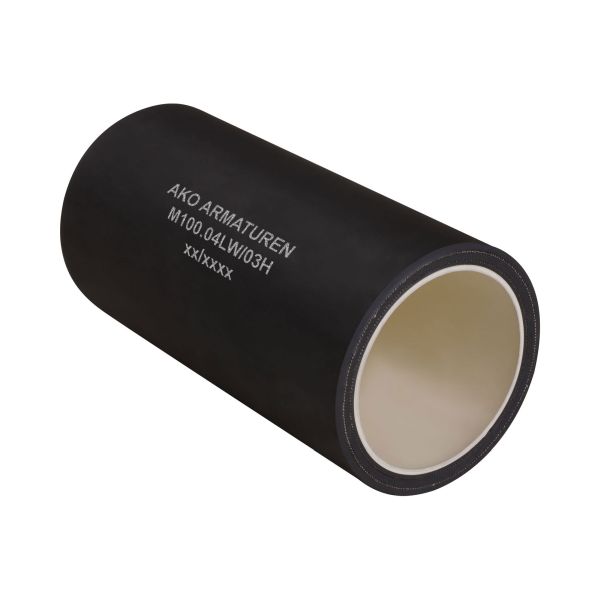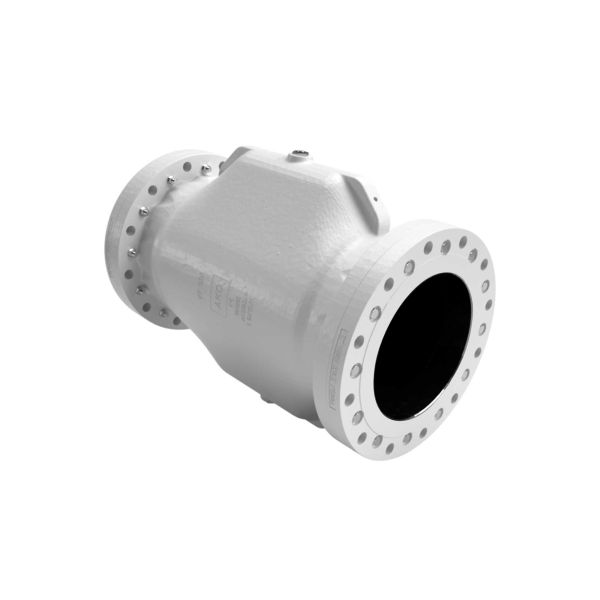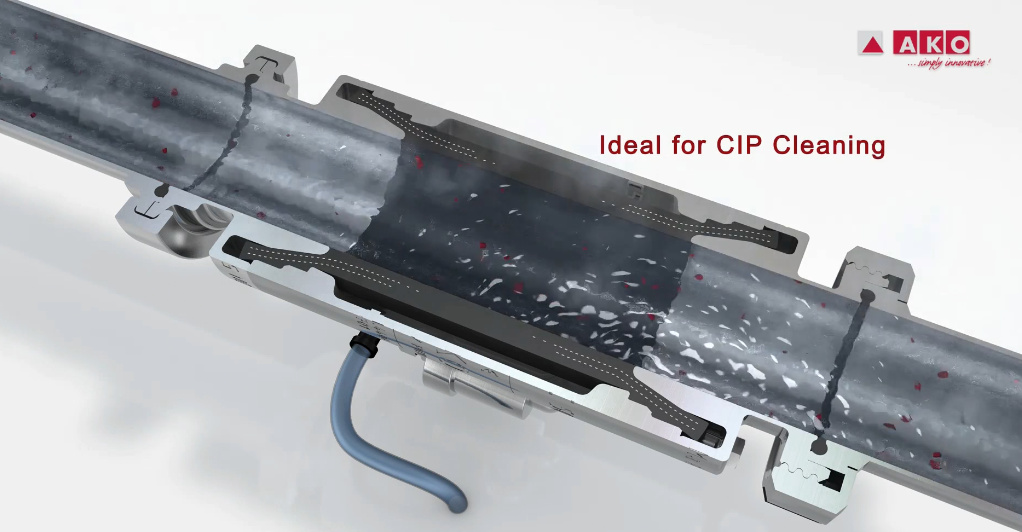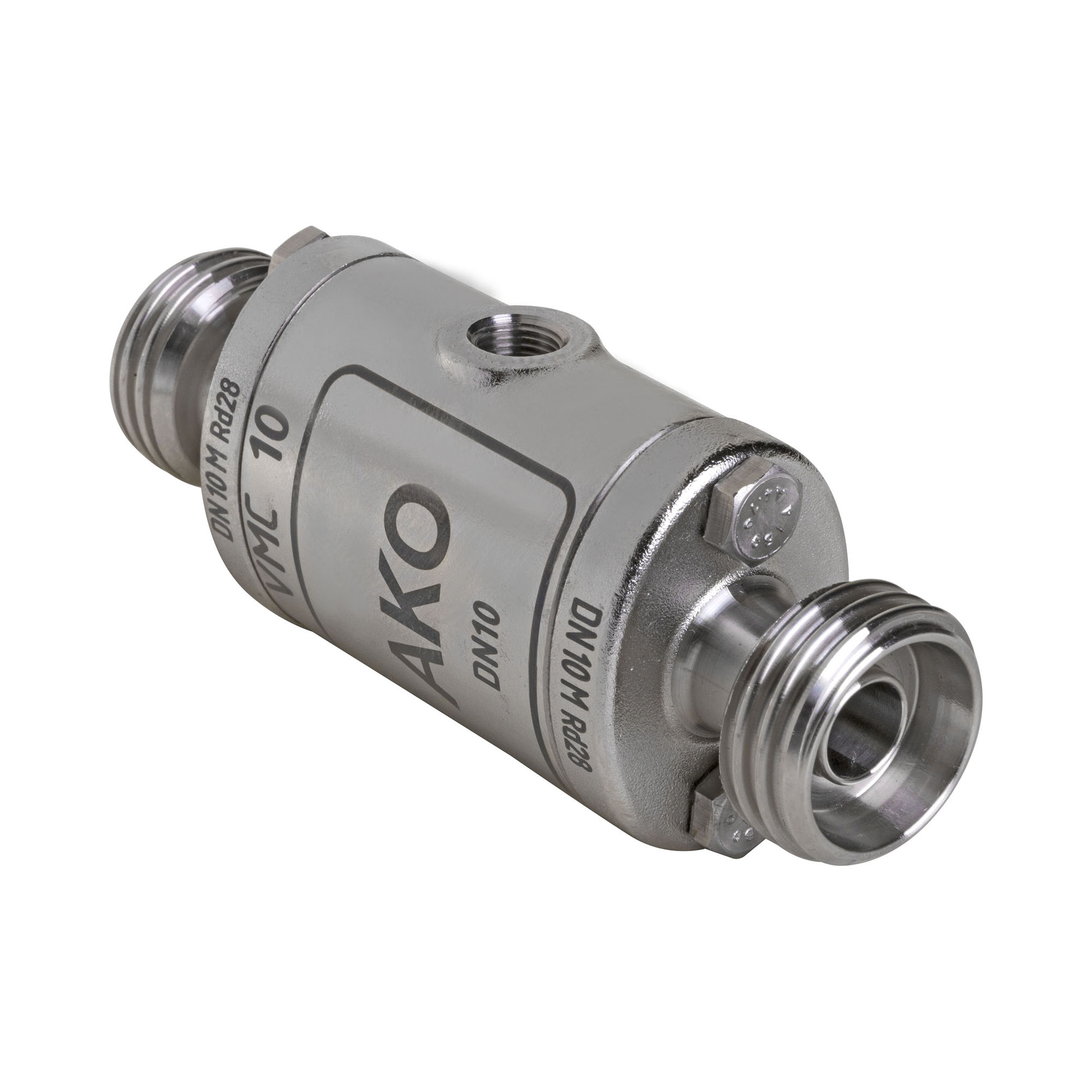Rubber Bladder Valve Function
Rubber bladder valves are mainly used as a shut off valve for any bulk and solids, suspensions, sludge’s or fibrous and corrosive media, and they are also used as throttle or dosing valves. When using the bladder valve as a throttle valve it needs the control from an electro proportional pressure control valve. Otherwise if it is used as a shut off valve, normally the control takes place through a 3/2-way solenoid valve.
Rubber Bladder Valve Operation
Rubber bladder air valves simply only require a so called differential pressure supply in the hollow housing. The differential pressure reflects the difference between the application medium pressure and the rubber bladder valve closing pressure. By the differential pressure of usually 2-3 bars supply into the elliptical hollow housing, the flexible rubber tube is squeezed together symmetrically like a lip and the elliptical hollow space inside of the housing closes fully.
Rubber bladder valve passages become completely closed due to the lip closing or folding of the elastic rubber tube. The soft seated closing of the flexible rubber tube guarantees an air and drip-tight closing on liquids and even solids, because solids such as powders, granules, pellets or fibrous media etc are completely entrapped by the soft seated elastic rubber tube.
As soon as the differential pressure interrupts and exhausts the air of the elliptical hollow housing, the flexible rubber tube starts to open immediately until the elliptical hollow housing is completely drained.
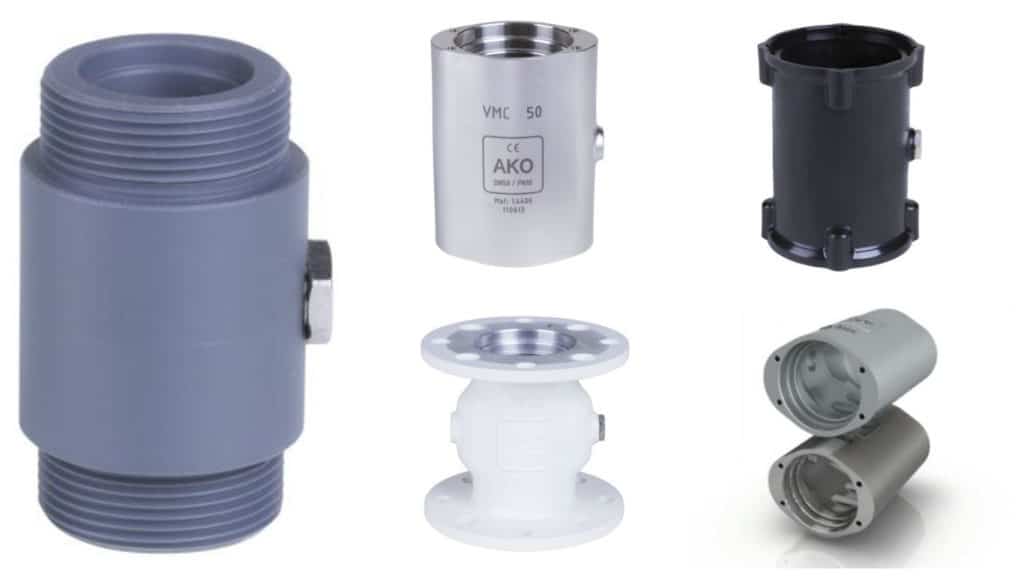
Rubber Bladder Valve Construction
Rubber bladder valves are very simply constructed and usually only contain three parts. Basically a partial textile reinforced extremely flexible rubber tube made of different elastomer qualities is simply slipped inside the housing. The housing is made of either aluminium, stainless steel or plastic and is formed as an elliptical hollow body. When the rubber tube sits symmetrically with both ends overlapping the same distance in the housing, the installation of either flanges or different covers takes place. The flanges or different covers with various connections made of any metal or plastic have a conical preparation.
Of rubber bladder valves, the conical preparation is pressed at each side into the elastic rubber tube ends. When the flanges or covers sit with the cones completely in the ends of the inside diameter of the flexible rubber tubes they get screwed (together) with the body and so grout the rubber tube at then ends. Therefore the elastic rubber tube has an absolute stable seat in the bladder valve housing.
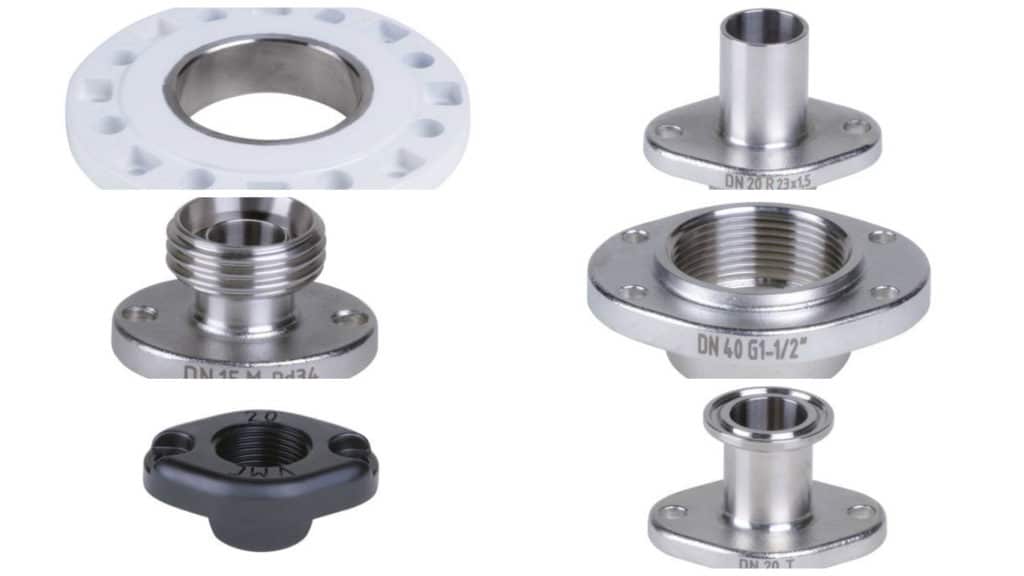
Rubber Bladder Valve Benefits
Rubber bladder valves boast simplicity – one of its five main advantages is the very easy maintaining. Usually the only spare parts such as wetted parts is the elastic rubber tube and in rare cases the flanges or covers. They can get interchanged with new flexible bladder valve replacement rubber bladders, flanges and covers without using special tools, and are supported by assembly instructions such as assembling videos.
Rubber bladder valves have an elliptical shaped hollow housing which reduces the air consumption per closing and so therefore also reduces the total energy costs.
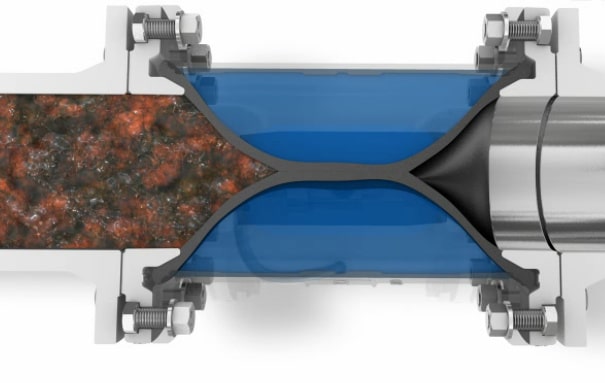
More Advantages for Rubber Bladder Valves
A further main advantage of the rubber bladder control valves follow of its completely free passage/bore construction without any dead spaces or restrictions. This enables a very easy cleaning of the bladder valves in place. Additionally the completely free passage/bore benefits from no plugging and a completely free flow of the working media without any pressure losses in the pipeline.
Rubber bladder valves can achieve savings in terms of downsizing the rubber bladder valve and pump diameter/size for the application process. According to its simple construction an advantage of the rubber bladder valves result in a very low weight compared to other industrial valves.
One of the most important advantages of the rubber bladder valve arise of the soft seated closing – according to the soft seated closing by the flexible rubber bladder, it is very resistant to abrasive media.
Rubber bladder valves present a very good valve solution for a wide range of different industries, branches and applications due to the variety of enumerated advantages. At the same time due to its simplicity the rubber bladder valve provides a very economical valve solution to many industries, branches and applications. The only restriction in using rubber bladder valves result in its limited working temperature of 130°C and working pressure of 6 bars.




